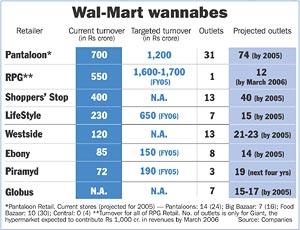I was reading a book on economics and found the following basic types of competition
– Perfect monopoly
– Oligopoly or duopoly
– Monopolisitic competition
– Perfect competition
I find the above types instructive and a good way to analyse the long term economics of an industry. Let me define the specifics of each type and add a few more subtypes under each
Perfect monoply – As the name suggest, there is just one firm and can charge any price it wants. Obviously this is more in theory than practise, although we have had several monopolies in india till date. Overall monoplies are very profitable (if private) for the investor and bad for the consumer. Several examples come to mind – BSNL, MTNL, Indian airlines (in the past) and now Indian railways. These were (or could have been) extremely profitable (excluding railways) even after all the mismanagement and waste. In a nutshell a perfect monopoly or a close one is extremely profitable for an investor. I would also define a company a monopoly if it has a huge market share in its specific segment and can hold on to it due to some competitive advantage.
Oligopoly or duopoly – A limited number or just two firms in the market. Although not as profitable as a monopoly, I would say these companies are quite profitable and extremely good investments for the long run. Several companies come to mind in this group. For ex : Crisil and other rating agencies, asian paints and other paint companies. One specific point worth noting is that the barrier to entry in this industry are high and hence new entrants cannot enter easily into the industry. As a result the incumbents can earn good profits.
Monopolistic competition – A large number of companies with limited profitability. Barriers to entry are not too high and as a result new companies can enter the industry more easily. I would say most of the commodity companies fall under this group. For ex: cement, steel, Auto, Telecom etc. Few companies in this kind of industry enjoy high profits and generally the lowest cost provider has some kind of competitive advantage. As an investor I would look at companies which have some kind of low cost advantage, some other local or national competitive advantage and a good management. Bad management in such an industry can kill the company.
Perfect competition – A ideal or theorotical construct more than a practical scenario. In such an industry there is no competitive advantage at all, all companies are price takers and they earn only the cost of capital. I would say very few industries would fall in this group. Brokerage firms come close to perfect competition, but still this is more theory than reality.
The way to classify an industry in anyone of the above groups is to look at the following variables
– no of companies in the industry controlling 60-70% of the sales in the industry
– Avg profitability of the companies
– Relative Market share changes between companies over a period of time
By doing the above analysis, one can figure out the level of competition and as a result have a rough idea of the long term economics of the industry.
The above analysis is just a rough guideline or a starting point of a more detailed analysis of the industry and individual companies. However by doing the above assesment, I am able to understand the intensity of competition in an industry over a period of time




